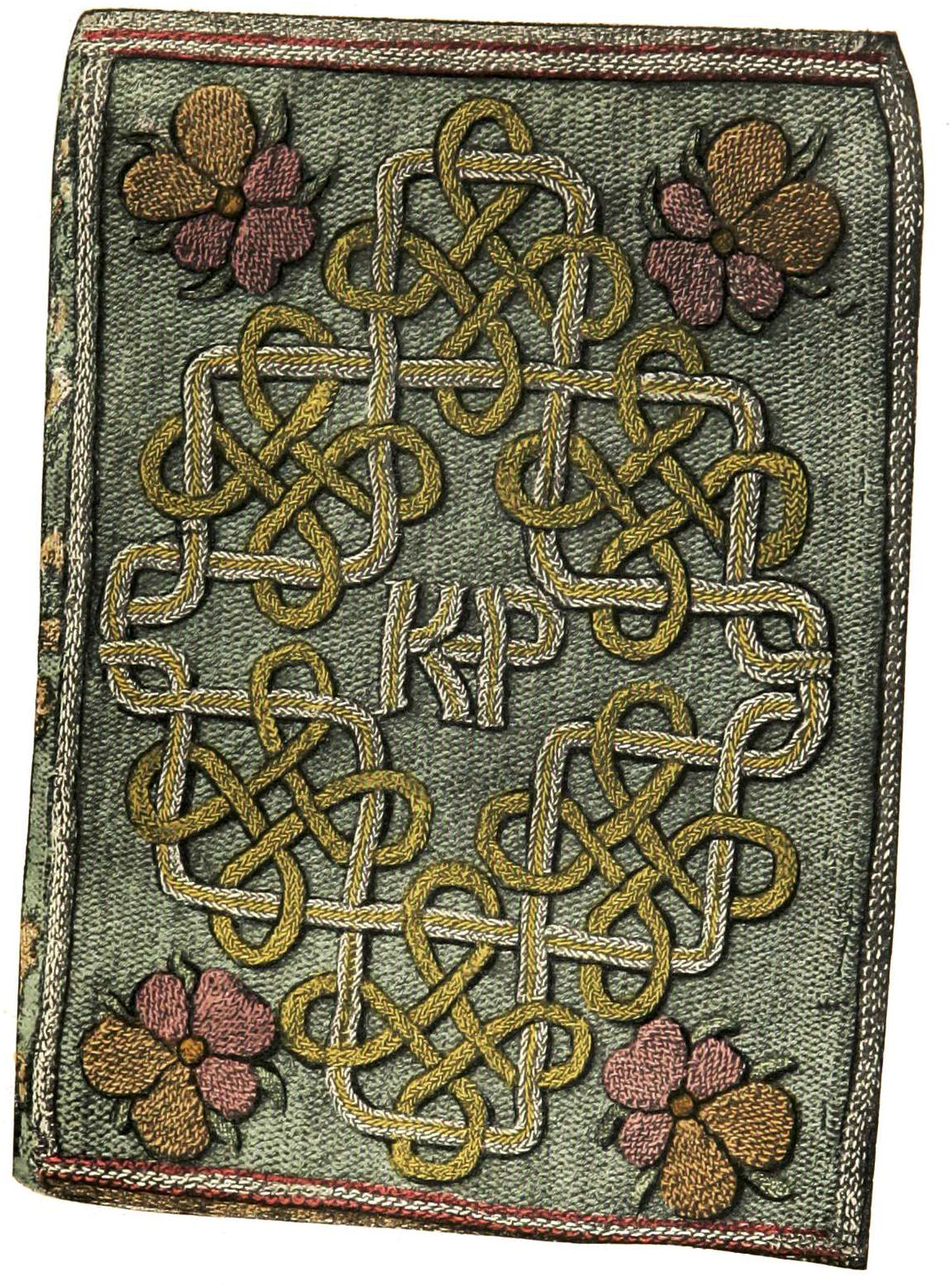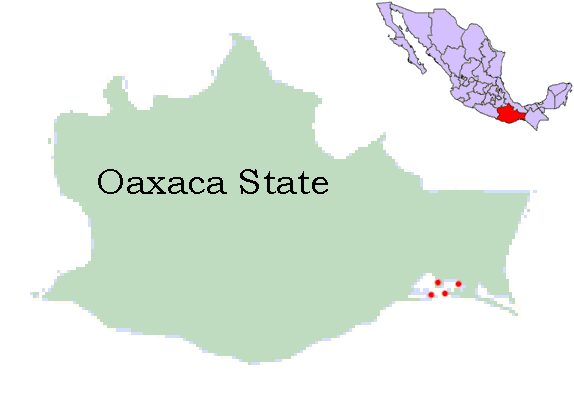|
Textiles Of Oaxaca
The state of Oaxaca in southern Mexico has a noteworthy tradition of finely crafted textiles, particularly handmade embroidery and woven goods that frequently use a backstrap loom. Oaxaca is home to several different groups of indigenous peoples, each of which has a distinctive textile tradition. Most notably present in the state of Oaxaca are the Zapotec, Nahua and Mixtec tribes. Each of these groups of indigenous people contributed their own influences on the modern atuendos or “attires” in Oaxaca today. Textiles and particular clothing garments and accessories can tell a lot about the culture in which they were produced. By analyzing the textiles, the technology used to create the garment can be deciphered. Many of the tools used were similar throughout Mexico, however, some tools were more common in specific regions or villages, resulting in many of the similarities in embroidery and patterns. The different garments created in Oaxaca also differ based on the indigenous peo ... [...More Info...] [...Related Items...] OR: [Wikipedia] [Google] [Baidu] |
Spinning (textiles)
Spinning is a twisting technique to form yarn from fibers. The fiber intended is drawn out, twisted, and wound onto a bobbin. A few popular fibers that are spun into yarn other than cotton, which is the most popular, are viscose (the most common form of rayon), and synthetic polyester. Originally done by hand using a spindle whorl, starting in the 500s AD the spinning wheel became the predominant spinning tool across Asia and Europe. The spinning jenny and spinning mule, invented in the late 1700s, made mechanical spinning far more efficient than spinning by hand, and especially made cotton manufacturing one of the most important industries of the Industrial Revolution. Process The yarn issuing from the drafting rollers passes through a thread-guide, round a traveller that is free to rotate around a ring, and then onto a tube or bobbin, which is carried on to a spindle, the axis of which passes through a center of the ring. The spindle is driven (usually at an angular ... [...More Info...] [...Related Items...] OR: [Wikipedia] [Google] [Baidu] |
Plainweave
In embroidery, plainweave is a technical category of woven base fabrics that are suitable for working certain varieties of embroidery. Plainweave fabrics have a tight weave and individual threads are not readily visible. Surface embroidery may be performed on plainweave, such as crewel work, goldwork, stumpwork, cutwork, and candlewicking. Embroideries that can be performed on plainweave do not require the crafter to perform stitches at a precise thread count. Most woven fabrics that were not specifically manufactured for the purpose of embroidery qualify as plainweave. Traditionally, linen plainweave is the preferred fabric for crewel embroidery. Other plainweaves suitable for crewel include denim, sailcloth, ticking, and organdy when worked in wool. Plainweave uses Historic eighteenth century crewel embroidery preferentially used a linen and cotton twill plainweave because it wore well. The fabric's diagonal rib was regarded as an esthetically pleasing contrast to the ... [...More Info...] [...Related Items...] OR: [Wikipedia] [Google] [Baidu] |
Chinantec
The Chinantec or Chinantecan languages constitute a branch of the Oto-Manguean family. Though traditionally considered a single language, '' Ethnologue'' lists 14 partially mutually unintelligible varieties of Chinantec.Palancar, Enrique L. (2014). Revisiting the Complexity of the Chinantecan Verb Conjugation Classes. In Jean-Léo Léonard & Alain Kihm (Eds.), ''Patterns in Mesoamerican Morphology'' (pp. 77–102). HAL 01100738 The languages are spoken by the indigenous Chinantec people who live in Oaxaca and Veracruz, Mexico, especially in the districts of Cuicatlán, Ixtlán de Juárez, Tuxtepec and Choapan, and in Staten Island, New York. Internal classification Egland and Bartholomew (1978) established fourteen Chinantec languages on the basis of 80% mutual intelligibility. '' Ethnologue'' found that one that had not been adequately compared (Tlaltepusco) was not distinct, but split another (Lalana from Tepinapa). At a looser criterion of 70% intelligibility, Lalana–Tepin ... [...More Info...] [...Related Items...] OR: [Wikipedia] [Google] [Baidu] |
Paño (head Covering)
Paños are pen or pencil drawings on fabric, a form of prison artwork made in the Southwest United States created primarily by '' pintos'', or Chicanos who are or have been incarcerated. The first paños, made with pieces of bedsheets and pillowcases, were made in the 1930s. They were originally used to communicate messages. Since then, they became used for primarily artistic purposes, and are often made with handkerchiefs. Prisoners sometimes use ''paños'' to get favors.Hoinski, Michael. "How Prison Art From Texas Captured the Art World's Attention." ''Texas Monthly''. Thursday February 13, 20141 Retrieved on March 3, 2014. Themes made with the artwork include Catholic faith symbols, Chicano political movement imagery, and prison imagery. Prisoners often mail their artwork to their families. [...More Info...] [...Related Items...] OR: [Wikipedia] [Google] [Baidu] |
Huipil
''Huipil'' (Nahuatl: '' huīpīlli'' ; Ch'orti': ''b’ujk''; Chuj: ''nip'') is the most common traditional garment worn by indigenous women from central Mexico to Central America. It is a loose-fitting tunic, generally made from two or three rectangular pieces of fabric, which are then joined with stitching, ribbons, or fabric strips, with an opening for the head and, if the sides are sewn, openings for the arms. Traditional ''huipils'', especially ceremonial ones, are usually made with fabric woven on a backstrap loom and are decorated with designs woven into the fabric, embroidery, ribbons, lace, and more. However, some ''huipils'' are also made from commercial fabric. Lengths of the ''huipil'' can vary from a short blouse-like garment or long enough to reach the floor. The style of traditional huipils generally indicates the ethnicity and community of the wearer as each has its own methods of creating the fabric and decorations. Ceremonial huipils are suitable for weddings, ... [...More Info...] [...Related Items...] OR: [Wikipedia] [Google] [Baidu] |
Cochineal
The cochineal ( , ; ''Dactylopius coccus'') is a scale insect in the suborder Sternorrhyncha, from which the natural dye carmine is derived. A primarily sessile parasite native to tropical and subtropical South America through North America (Mexico and the Southwest United States), this insect lives on cacti in the genus ''Opuntia'', feeding on plant moisture and nutrients. The insects are found on the pads of prickly pear cacti, collected by brushing them off the plants, and dried. The insect produces carminic acid that deters predation by other insects. Carminic acid, typically 17–24% of dried insects' weight, can be extracted from the body and eggs, then mixed with aluminium or calcium salts to make carmine dye, also known as cochineal. Today, carmine is primarily used as a colorant in food and in lipstick (E120 or Natural Red 4). Carmine dye was used in the Americas for coloring fabrics and became an important export good in the 16th century during the colon ... [...More Info...] [...Related Items...] OR: [Wikipedia] [Google] [Baidu] |
Mazatec People
The Mazatec are an indigenous people of Mexico who inhabit the Sierra Mazateca in the state of Oaxaca and some communities in the adjacent states of Puebla and Veracruz. Language family The Mazatecan languages are part of the Popolocan family which, in turn, is part of the Otomanguean language family. Post-colonial period The Mazatecs' religion represents a syncretism of traditional beliefs with Christian beliefs brought by the Spanish conquistadors. Traditional religious rituals Mazatec tradition includes the cultivation of entheogens for spiritual and ritualistic use. Plants and fungi used for this purpose include psilocybin mushrooms, psychoactive morning glory seeds (from species such as '' Ipomoea tricolor'' and ''Ipomoea corymbosa''), and perhaps most significant to the Mazatecs, ''Salvia divinorum''. This latter plant is known to Mazatec shamans as ''ska María Pastora'', the name containing a reference to the Virgin Mary.Valdés ''et al.'' (1983) Notable Maza ... [...More Info...] [...Related Items...] OR: [Wikipedia] [Google] [Baidu] |
Mixtec People
The Mixtecs (), or Mixtecos, are indigenous Mesoamerican peoples of Mexico inhabiting the region known as La Mixteca of Oaxaca and Puebla as well as La Montaña Region and Costa Chica Regions of the state of Guerrero. The Mixtec Culture was the main Mixtec civilization, which lasted from around 1500 BC until being conquered by the Spanish in 1523. The Mixtec region is generally divided into three subregions based on geography: the Mixteca Alta (Upper Mixtec or Ñuu Savi Sukun), the Mixteca Baja (Lower Mixtec or Ñuu I'ni), and the Mixteca Costa (Coastal Mixtec or Ñuu Andivi). The Alta is drier with higher elevations, while the Baja is lower in elevation, hot but dry, and the Coasta also low in elevation but much more humid and tropical. The Alta has seen the most study by archaeologists, with evidence for human settlement going back to the Archaic and Early Formative periods. The first urbanized sites emerged here. Long considered to be part of the larger Mixteca region, ... [...More Info...] [...Related Items...] OR: [Wikipedia] [Google] [Baidu] |
Chontal Maya People
The Chontal Maya are a Maya people of the Mexican state of Tabasco. "Chontal", from the Nahuatl word for ''chontalli'', which means "foreigner", has been applied to various ethnic groups in Mexico. The Chontal refer to themselves as the Yokot'anob or the Yokot'an, meaning "the speakers of Yoko ochoco", but writers about them refer to them as the Chontal of Centla, the Tabasco Chontal, or in Spanish, ''Chontales''. They consider themselves the descendants of the Olmecs, and are not related to the Oaxacan Chontal. Location The Yokot'an inhabit 21 towns in a large area known as "la Chontalpa" that extends across five municipalities of Tabasco: Centla, El Centro, Jonuta, Macuspana, and Nacajuca. In Nacajuca, they form a majority of the population. The terrain is highly varied — no single landform dominates — and it has many bodies of water. The land is traversed by seasonally-flooding rivers, and there are numerous lakes, lagoons, and wetlands. The climate is humi ... [...More Info...] [...Related Items...] OR: [Wikipedia] [Google] [Baidu] |
Huave People
The Huave (also spelled Huavi or Wabi) are an indigenous people of Mexico. The autodenomination term used by the Huave themselves is ''Ikoots'' or ''Kunajts'' (the first-person inclusive pronoun, thus meaning "Us"), or ''Mareños'' (meaning "Sea People" in Spanish). They have inhabited the Isthmus of Tehuantepec for more than 3000 years, preceding the Zapotec people in settling the area. Today they inhabit several villages (most notably San Mateo del Mar San Mateo del Mar is a coastal town and municipality in Oaxaca in south-western Mexico. It is part of the Tehuantepec District in the west of the Istmo Region. It is the largest of four Huave towns in the region, the others being San Dionisio ..., in the Tehuantepec District, and Santa María del Mar, San Dionisio del Mar and San Francisco del Mar, in the Juchitán District) on the sandspits of the Pacific Ocean and trade marine products with inland neighbors. According to the 2000 census, 13,687 people declared themsel ... [...More Info...] [...Related Items...] OR: [Wikipedia] [Google] [Baidu] |






